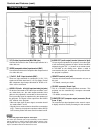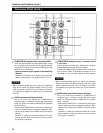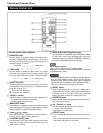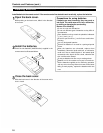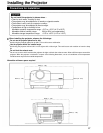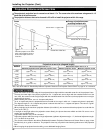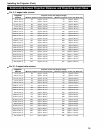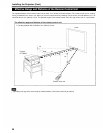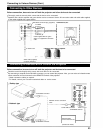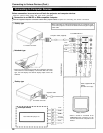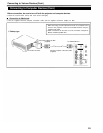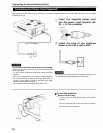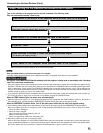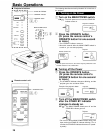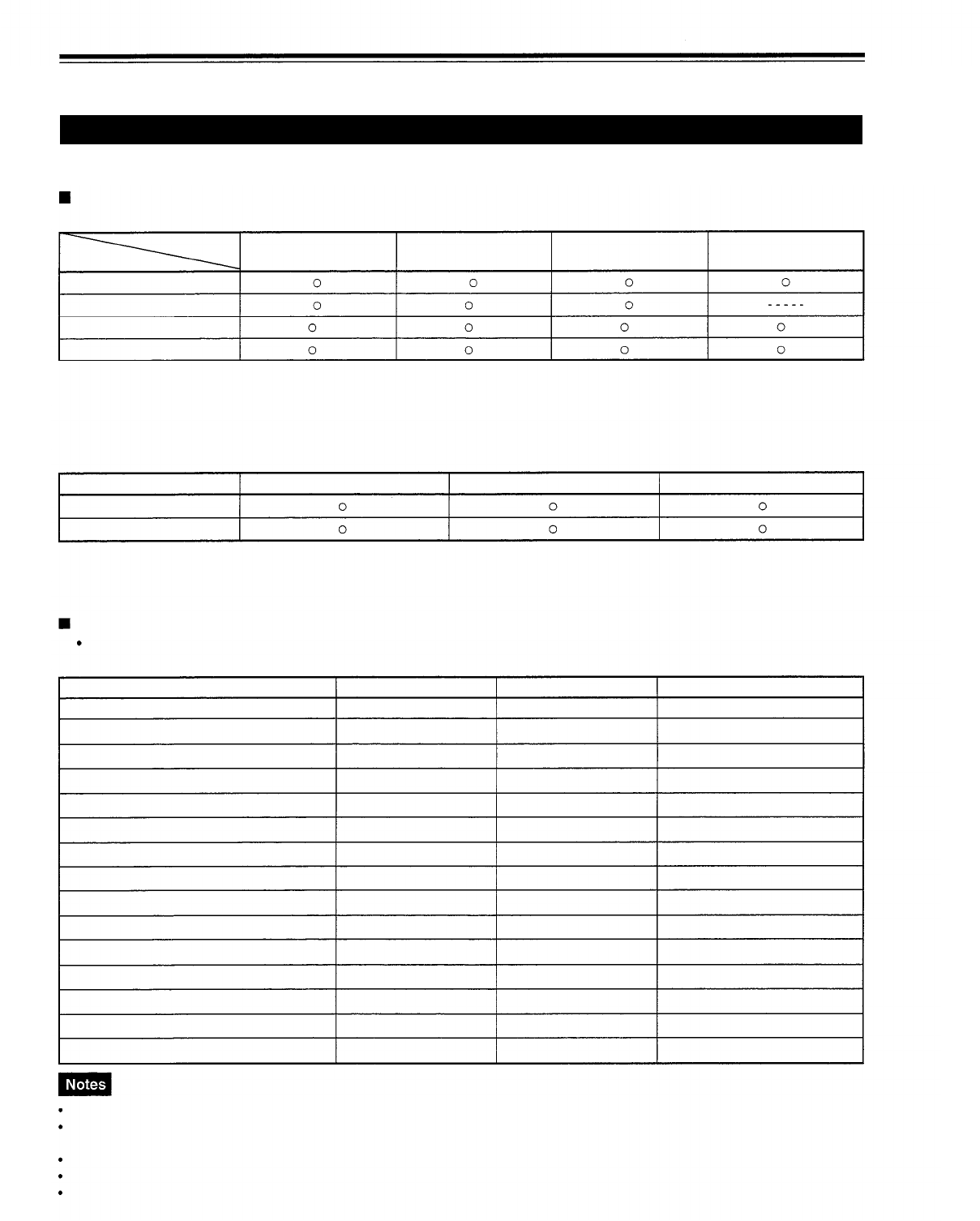
Connecting to Various Devices
* Before connection, be sure to turn off the projector and connected devices.
* Read the manual which comes with each device thoroughly.
Signals that Can Be Input to the Projector
The following signals can be input to the projector:
Video signals
(1) Response to color systems
Color system
NTSC
Input terminal
PAL
SECAM
NTSC4.43
VIDEO
Y/C
*1
Y, PB/B-Y, PR/R-Y
*2
*2
*2
*2
G, B, R, H/CS, V
*2 *2
*2
*2
*
1
: Responds if Y/C output is available.
*
2
: Signifies that component signals (“Y, P
B
, P
R
”/“Y, B-Y, R-Y”/“G, B, R, H/C
S
, V”) conform to the signal timing (synchronization
and video period) of each color system. The color systems are used for convenience only.
(2) Response to double density (*1), high-vision signals
*
1
: Signals whose density of scanning lines/field is twice as high.
Input terminal
NTSC*
2
PAL*
3
High-vision signal
Y, P
B
/B-Y, P
R
/R-Y
G, B, R, H/C
S
, V
*
2
: Responds to signals whose horizontal scanning frequency is 31.5 kHz. NTSC can be made twice as dense by a line doubler.
Also, possible to respond to fully-specified, decoded wide-clear-vision signals and 525P progressive signals.
*
3
: Responds to signals whose horizontal scanning frequency is 33.5 kHz. PAL can be made twice as dense by a line doubler.
Computer signals
Signals with the following resolutions can be input to the input connector/terminals of COMPUTER IN-1 (PC) or COMPUTER
IN-2 (G, B, R, H/CS, V). (The following signals are preset.)
Screen resolution (standard name)
Horizontal frequency
640 x 400 (PC-9801)
24.8kHz
640 x 350 (VGA1)
31.5kHz
640 x 480 (VGA3)
31.5kHz
640 x 480 (Macintosh 13”)
35.0kHz
640 x 480 (VGA VESA)
37.5kHz
800 x 600 (SVGA1)
37.9kHz
800 x 600 (SVGA2)
48.1kHz
832 x 624 (Macintosh 16”)
49.7kHz
1024 x 768 (XGA1)
48.4kHz
1024 x 768 (XGA2)
56.5kHz
1024 x 768 (Macintosh 19”)
60.2kHz
1152 x 870 (Macintosh 21”)
68.7kHz
1280 x 1024 (SXGA1)
64.0kHz
1280 x 1024 (SXGA2)
70.8kHz
1360 x 1024 (SXGA3: Mac Board)
80.0kHz
Vertical frequency
56.4Hz
70.1Hz
59.9Hz
66.7Hz
75.0Hz
60.3Hz
72.2Hz
74.6Hz
60.0Hz
70.1Hz
74.9Hz
75.0Hz
60.0Hz
67.0Hz
75.1Hz
Scanning method
Non-interlace
Non-interlace
Non-interlace
Non-interlace
Non-interlace
Non-interlace
Non-interlace
Non-interlace
Non-interlace
Non-interlace
Non-interlace
Non-interlace
Non-interlace5
Non-interlace
Non-interlace
Interlace signals are not handled.
Some signals other than listed above can be displayed. But they require adjustment. Even some of the signals listed above may require
adjustment depending on the video board used.
When a signal other than listed above is input, the screen could be partially erased or an unneeded fold-over screen could appear.
Even signals in the frequency range that can be input may not be displayed normally depending on the type of the signal.
Composite sync.(C
S) and G on sync. signals can not handled depending on the devices connected.
21



